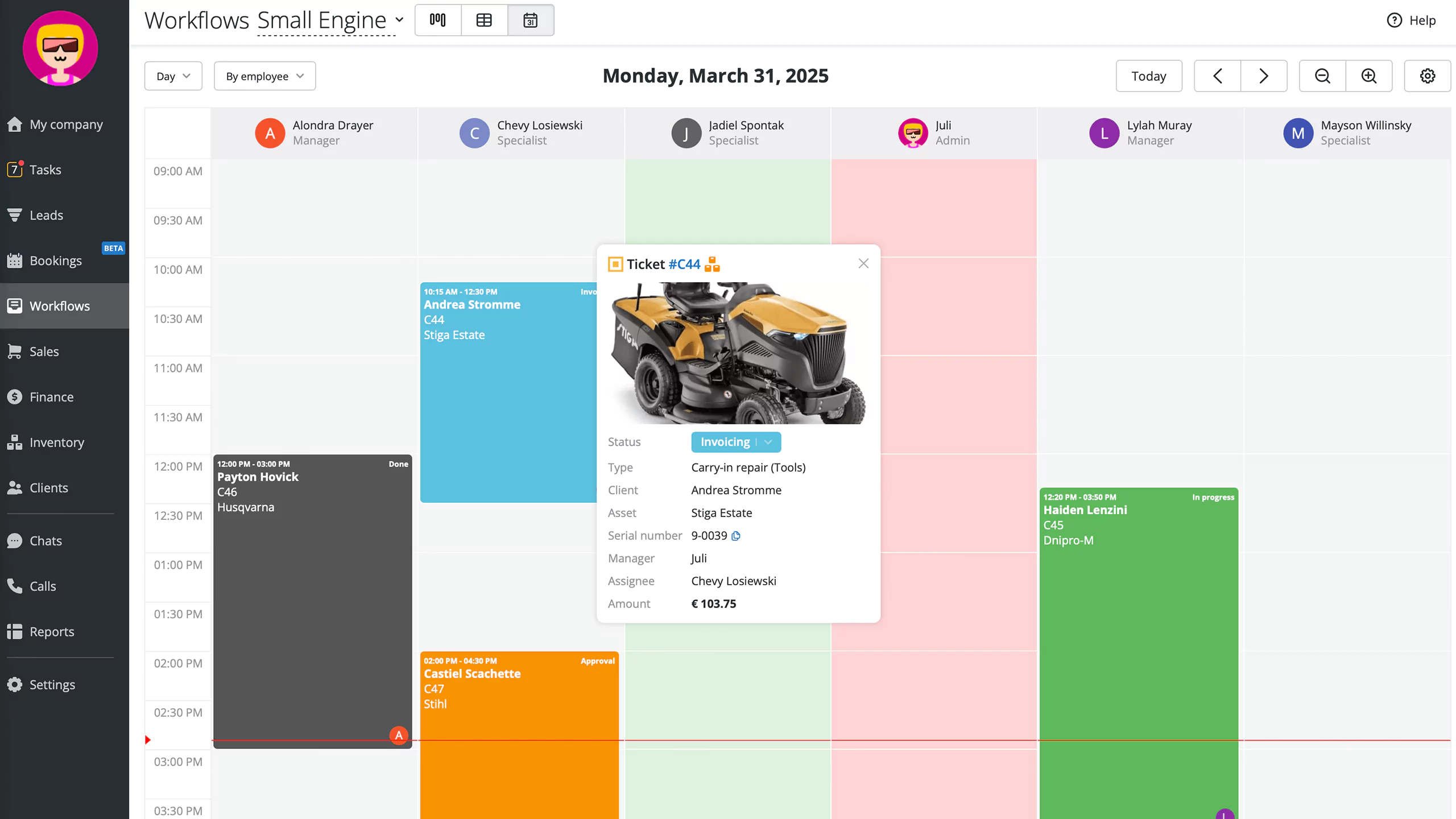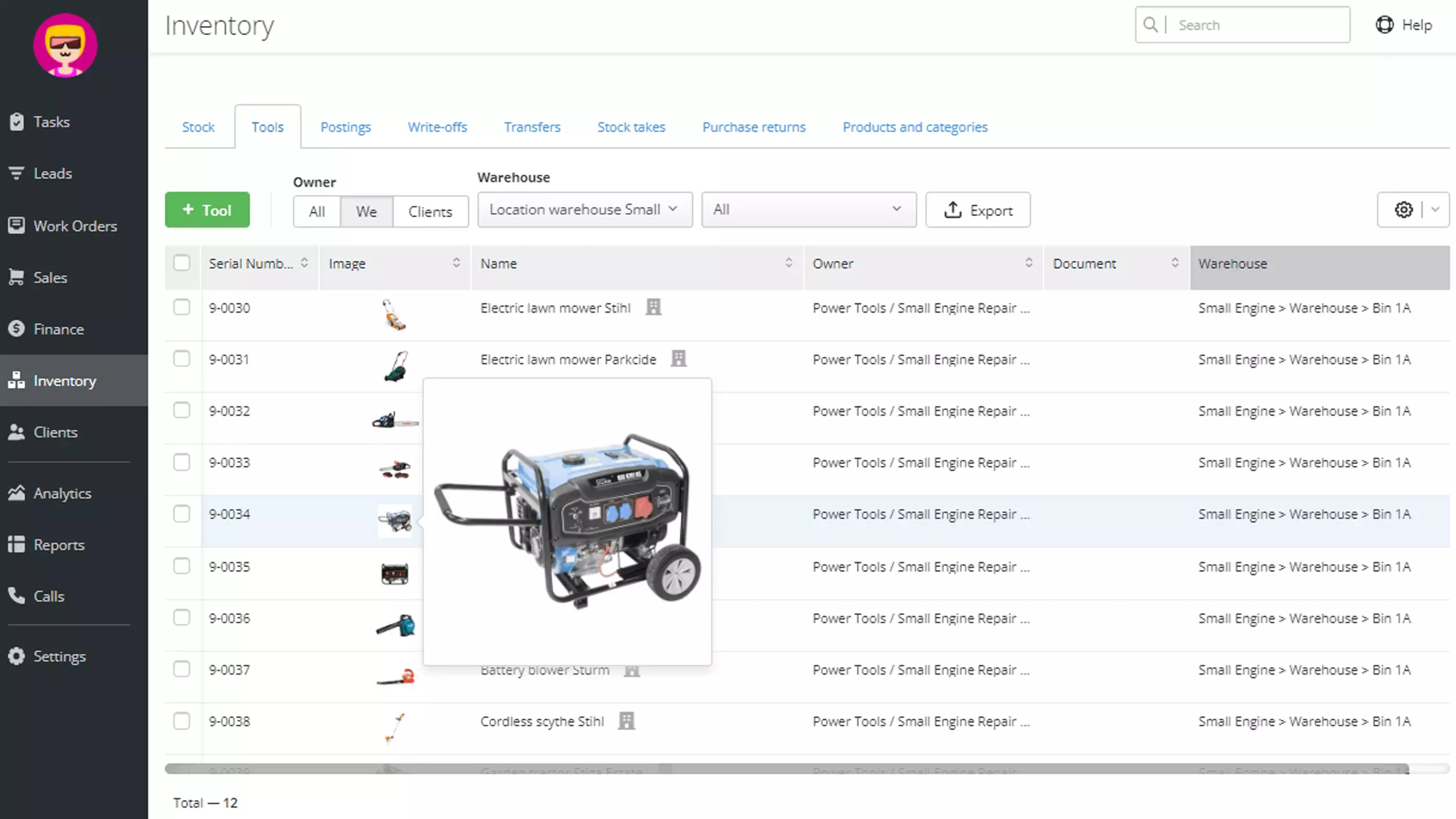Landscaping Equipment And Tools Every Professional Landscaper Should Buy
Help your landscaping business thrive with this checklist.
Your business needs practical landscaping tools to provide quality lawn care & maintenance services. Let’s find out in this blog post what to look out for and how to make this investment worth all the money spent.
Table of Contents
How to Choose the Best Landscaping Tools
Landscaping Tools List
How to Take Good Care of Landscaping Tools and Equipment
Safety Tips to Minimise the Risk of Occupational Injuries
Final Thoughts
Having the right landscaping tools and equipment can make the difference between success and inefficiency in any project. While you may already be familiar with essentials like spades, lawn mowers, and pruning shears, many other tools can save time, improve efficiency, and reduce costs.
UK weather conditions, including frequent rainfall, frost, and variable temperatures, can significantly impact tool selection. Investing in rust-resistant, durable equipment is crucial to withstand these challenges.
This comprehensive guide will help you choose the best landscaping tools in the UK, covering everything from hand tools to specialist machinery and field service management software for automating your landscaping business.
How to Choose the Best Landscaping Tools
Selecting the right landscaping tools requires careful consideration to ensure you get the best return on investment. Here’s what to keep in mind:
- Set a Budget
Determine how much you can realistically invest in new or second-hand equipment. Setting a budget helps narrow down your options and ensures you invest wisely. - Find a Reliable UK Supplier
Choose a supplier with experience in the industry who offers quality products, spare parts, and good customer service. Reputable UK suppliers include Screwfix, Wickes, B&Q, and Travis Perkins. Checking customer reviews can help identify reliable vendors. - Choose High-Quality Tools
Opt for durable landscaping tools from well-known brands with robust components designed to withstand frequent use. Some of the best brands available in the UK include Stihl, Husqvarna, Makita, and Draper. - Check for Compatible Accessories
Ensure that the tools you invest in support additional attachments or accessories that enhance efficiency and performance. - Look for Warranties and Support
For expensive commercial landscaping equipment, consider extended warranty plans and repair coverage to save on maintenance costs.
Landscaping Tools List
With countless gadgets and tools promising to make your job easier, it is challenging to choose which ones truly deserve a spot in your toolkit. This comprehensive landscaping tools list helps you make informed choices to ensure your projects flourish to their fullest potential.
Landscaping Hand Tools
Even with modern power tools, hand tools remain essential for precision tasks:
- Garden Spade
Ideal for digging, edging, and planting. Stainless steel blades are recommended to resist rust in damp UK conditions. - Garden Hosepipe
Essential for watering plants efficiently, with frost-proof and kink-resistant models being ideal for UK gardens. - Leaf Rake
Helps gather leaves, mulch, and debris. Opt for a lightweight but sturdy model for frequent autumn use. - Wheelbarrow
Useful for transporting soil, gravel, and plants. A rust-proof, heavy-duty wheelbarrow is ideal for wet weather conditions. - Landscape Tamper
Ensures soil and gravel are compacted for a level surface, crucial for preventing water pooling in rainy UK climates. - Pruning Shears
Perfect for trimming small branches and shrubs. Look for corrosion-resistant blades to handle the UK’s wet environment.
Landscaping Power Tools
For professionals, power tools help complete jobs faster and with less effort:
- Lawn Mower
Available in petrol, electric, or cordless models. Petrol mowers offer more power for large lawns, while electric or battery-operated models are quieter and eco-friendly. - Hedge Trimmer
Essential for shaping hedges and shrubs efficiently. Battery-powered models work well for smaller gardens, while petrol options suit larger properties. - Leaf Blower
Removes leaves and debris quickly. Cordless electric models are ideal for urban gardens, while petrol blowers are more suited for larger estates. - Edging Tools
Ideal for creating clean edges around pathways and flowerbeds, particularly after prolonged rain when grass tends to spread. - Lawn Aerator
Improves drainage and promotes healthier grass growth, a must-have tool given the UK’s high rainfall and soil compaction issues.
Productivity Tools for Landscapers
For professional landscapers, staying ahead involves integrating innovative tools that facilitate design and planning, while managing everyday tasks and processes more effectively.
1. Digital Solutions and Applications
Essential productivity tools and apps that every landscaper should consider include:
- Work order management software streamlines job processing and progress tracking, ensuring landscaping jobs and projects stay on schedule.
- Software for customer management enhances client interactions by keeping contact information and job history organised.
- Landscaping design tools such as SketchUp or iScape assist landscapers in visualising projects, providing clients with a clear picture of potential designs.
- Quoting software integrated with QuickBooks or Xero simplifies billing processes and improves cash flow management.
 Landscaping job scheduling tools in RemOnline
Landscaping job scheduling tools in RemOnline
2. Landscaping Measuring Tools
Landscaping measuring tools are essential instruments to accurately assess and plan outdoor spaces. Common tools include:
- Measuring tapes for precise measurements of length and distance.
- Laser distance measurers provide quick and accurate readings over longer distances without physical strain.
- Garden rulers or yardsticks are ideal for smaller areas and detailed measurements.
- Landscaping tools like the clinometer help measure elevation changes, while the level ensures that surfaces are even.
- Stakes and flags to mark measurements on-site and create visual layouts for designs.
Pro Tip: Use these tools together to create well-planned, aesthetically pleasing spaces that meet both functional and design requirements.
3. Landscaping Leveling Tools
These tools come in various forms, including laser levels, string levels, and leveling bars, each designed to help achieve precise elevation and grading in the landscape. A laser level projects a beam of light that provides a reference line for consistent height measurements across large areas, while a string level uses a taut line and bubble level to check the alignment of surfaces. Leveling bars, often equipped with a flat edge, assist in smoothing and grading soil or mulch to achieve the desired contour. Landscaping leveling tools help ensure proper drainage, enhance the visual appeal of gardens and lawns, and lay the groundwork for successful projects.
How to Take Good Care of Landscaping Tools and Equipment
Proper maintenance ensures longevity, efficiency, and safety for your landscaping tools, especially in the UK’s wet and often unpredictable climate. Following these best practices will help you protect your investment and comply with UK safety standards, such as the Personal Protective Equipment at Work Regulations.
Clean Tools After Use
After working in wet conditions, wipe down hand tools with a damp cloth and dry them thoroughly to prevent rust and corrosion. For power tools, use a brush or compressed air to remove dirt from vents and moving parts.
Sharpen Blades Regularly
Keep lawn mower, pruning, and hedge trimmer blades sharp for clean cuts, reducing plant stress and improving efficiency. Regularly inspect for signs of wear, particularly in damp conditions where rust can form more quickly.
Lubricate Moving Parts
Apply a suitable lubricant to hinges, shears, and cutting edges to prevent seizing and rust buildup, especially after exposure to rain or frost.
Organise Storage
Store tools in a dry, well-ventilated shed or toolbox. Hanging tools vertically prevents moisture accumulation, reducing the risk of rust. For added protection, use silica gel packets in storage areas to absorb excess moisture.
Automate Inventory Management Tasks
Inventory management software helps track equipment availability, service schedules, and maintenance needs, preventing unexpected breakdowns.
When using RemOnline’s landscape business software, you can create individual digital warehouses for each group of your business assets. Effortlessly avoid costly errors, improve employee productivity, and control consumables usage.
 Organising landscaping tools with RemOnline
Organising landscaping tools with RemOnline
Store Cables Properly
Securely wrap and store power tool cables to prevent damage from tangling or moisture exposure. Avoid leaving them on damp surfaces where water ingress could cause electrical faults.
Fuel Maintenance
For petrol-powered tools, top up the fuel before long-term storage to prevent condensation buildup inside the tank, which can lead to engine damage. Consider using fuel stabilisers to maintain fuel quality during colder months.
Check PPE Compliance
Regularly inspect and maintain Personal Protective Equipment (PPE) such as gloves, safety goggles, and steel-toe boots, ensuring they meet BSI safety standards for landscaping professionals.
Safety Tips to Minimise the Risk of Occupational Injuries
Landscaping can be physically demanding and potentially hazardous. To ensure safety, follow these guidelines:
Take Breaks During Working Hours
Regular breaks during working hours will help ensure your body isn't overworked or pushed too hard and risk potential strain or fatigue-related injuries. Get adequate rest in between shifts while giving yourself enough time to recharge to stay productive throughout the rest of your day.
The work order app significantly enhances productivity for landscaping professionals. You can plan your workday, prioritise tasks, and streamline communication and scheduling in the field. With real-time updates, access to project details, and updates on progress, the app minimises downtime and reduces the likelihood of miscommunication.
 RemOnline App for landscapers
RemOnline App for landscapers
Learn Proper Lifting Techniques
IIt's easy to forget sometimes, but lifting heavy equipment incorrectly can lead to serious back injuries if not done correctly. Therefore landscaping workers must learn proper lifting techniques to limit their chances of being injured while on the job. Lift heavy objects with bent knees and a straight back to avoid strain.
Implement Use Machinery Safety Protocols
To avoid crushing or even fatal injuries, every landscaper should carefully understand how the equipment works, check for any potential hazards before starting its operation, and follow any instructions on electrical safety listed in its user manual.
Final Thoughts
Having the right landscaping tools and equipment is essential for efficiency, safety, and productivity. By investing in high-quality tools and maintaining them properly, you can ensure long-term success in your landscaping business. For streamlined inventory management and work order tracking, consider RemOnline’s landscaping business solutions.



